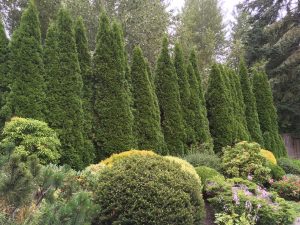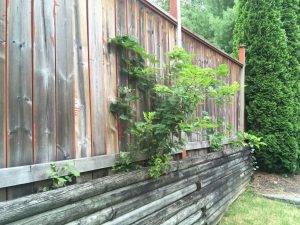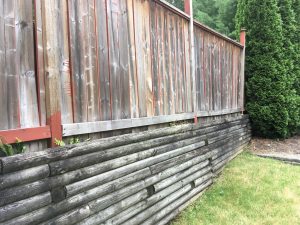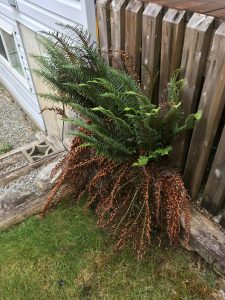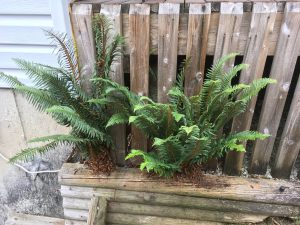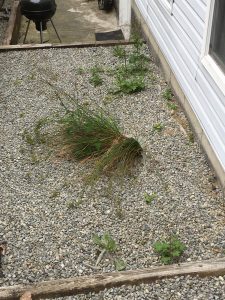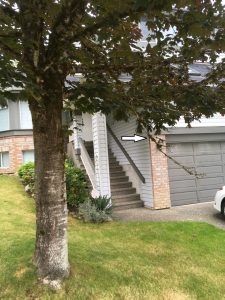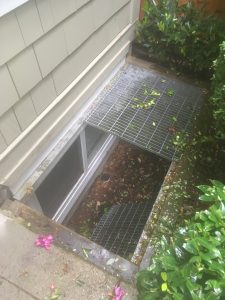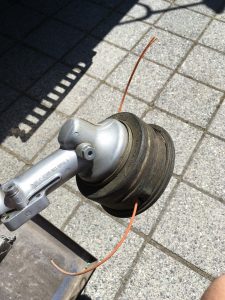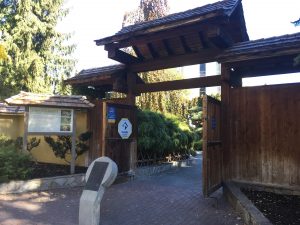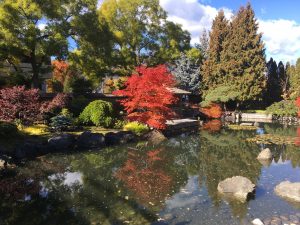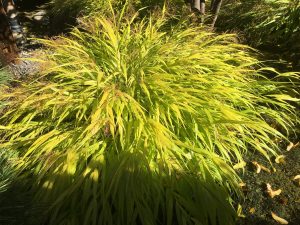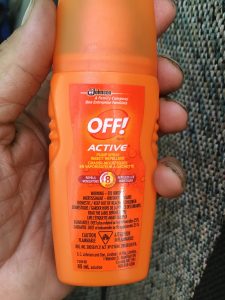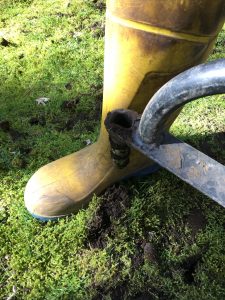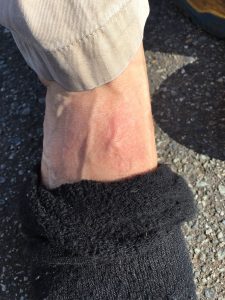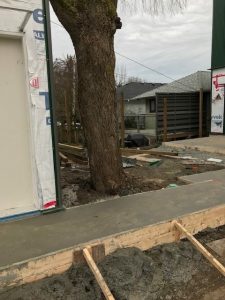Details matter a great deal. I was recently called to a residential garden with lawn care and pruning clearly completed well. But what about the details? Many details remained and taken together, they detract from the overall presentation. So, I got to work.
Details
Blackberry and salmon berry shoots protruding from the cedar hedge and shrubs were by far the biggest blemishes. So, I cut them down which sounds easy until you see the wild zone at the back of the cedar hedge. The school board never maintains the wild zone so of course it allows all kinds of undesirables to encroach on the neighbouring landscape.
Ferns
I also found two ferns on the side of the patio and cut them back. They are native sword ferns (Polystichum munitum) and only require one annual cutback after new fronds push out.
Weeds
Nobody likes picking weeds but the side of the house was starting to “burn”. The rock layer isn’t deep enough to deprive the weeds of sunlight so they poke out of the landscape fabric.
Tree branches
It’s a small detail but one dead branch pointing down (see white arrow) is unsightly and it presents an obstacle for lawn care people. So grab a sharp hand saw and make it disappear.



